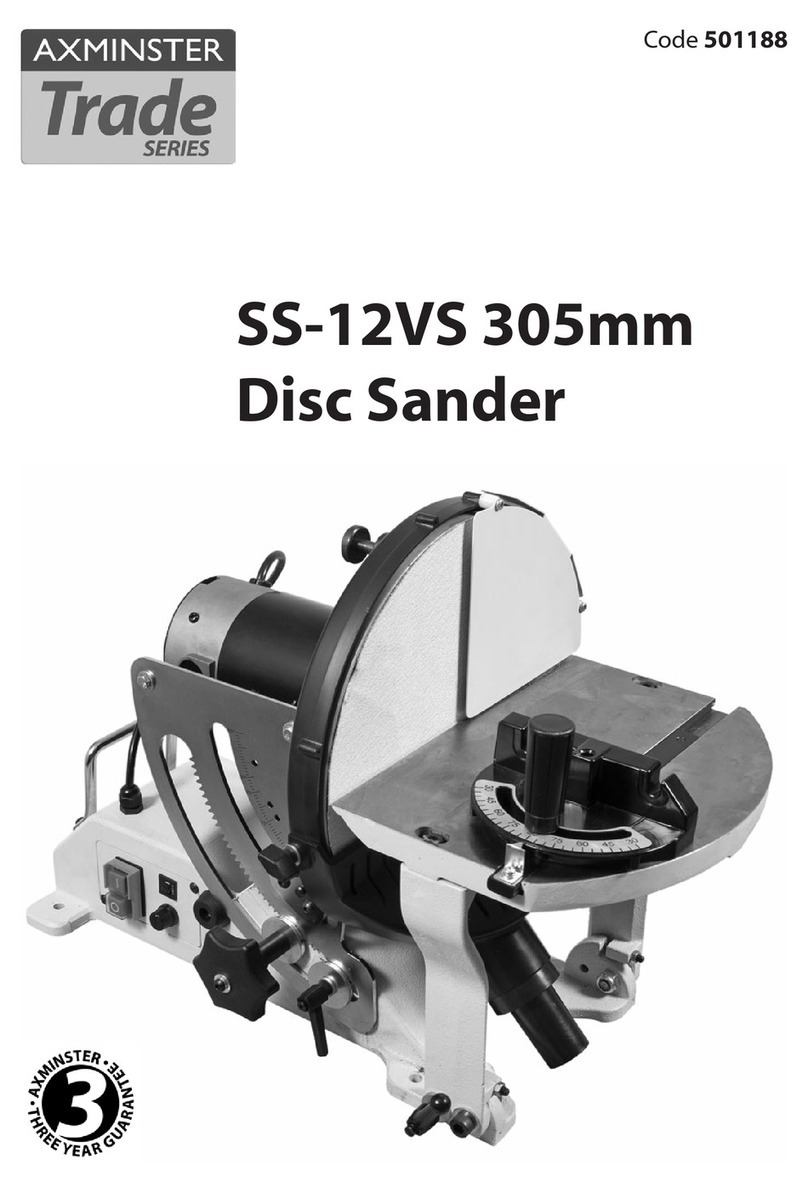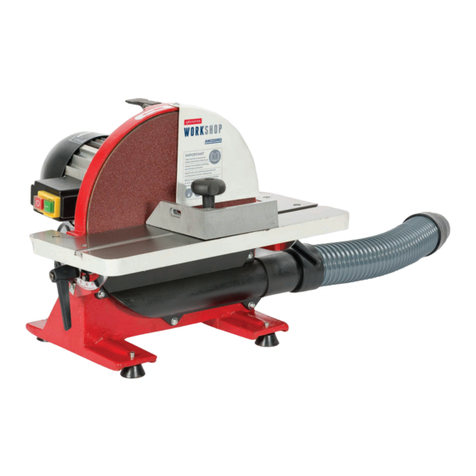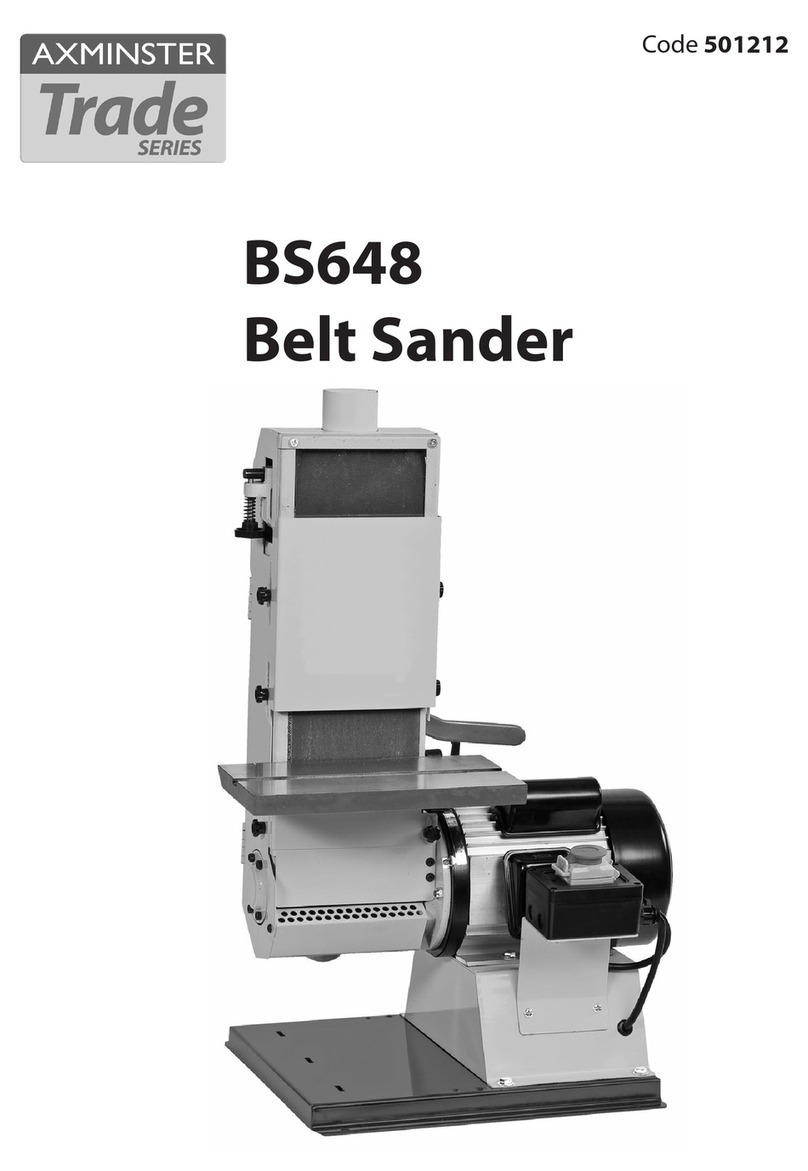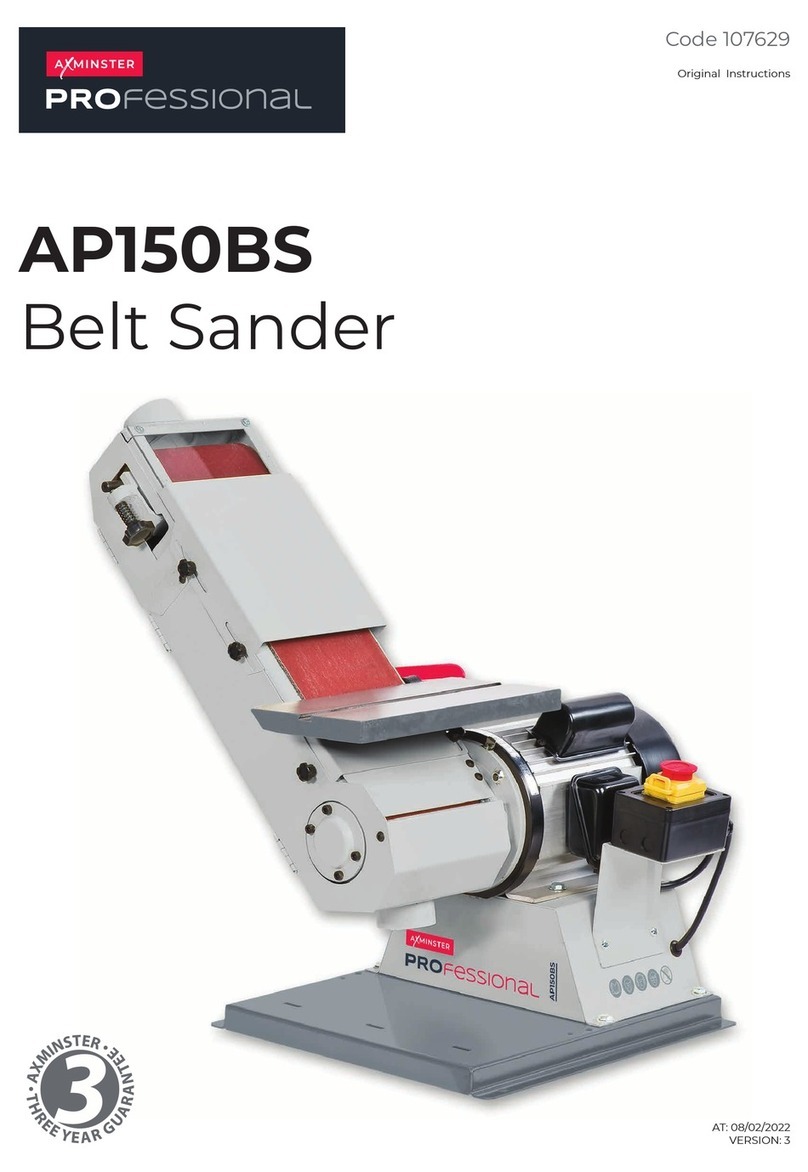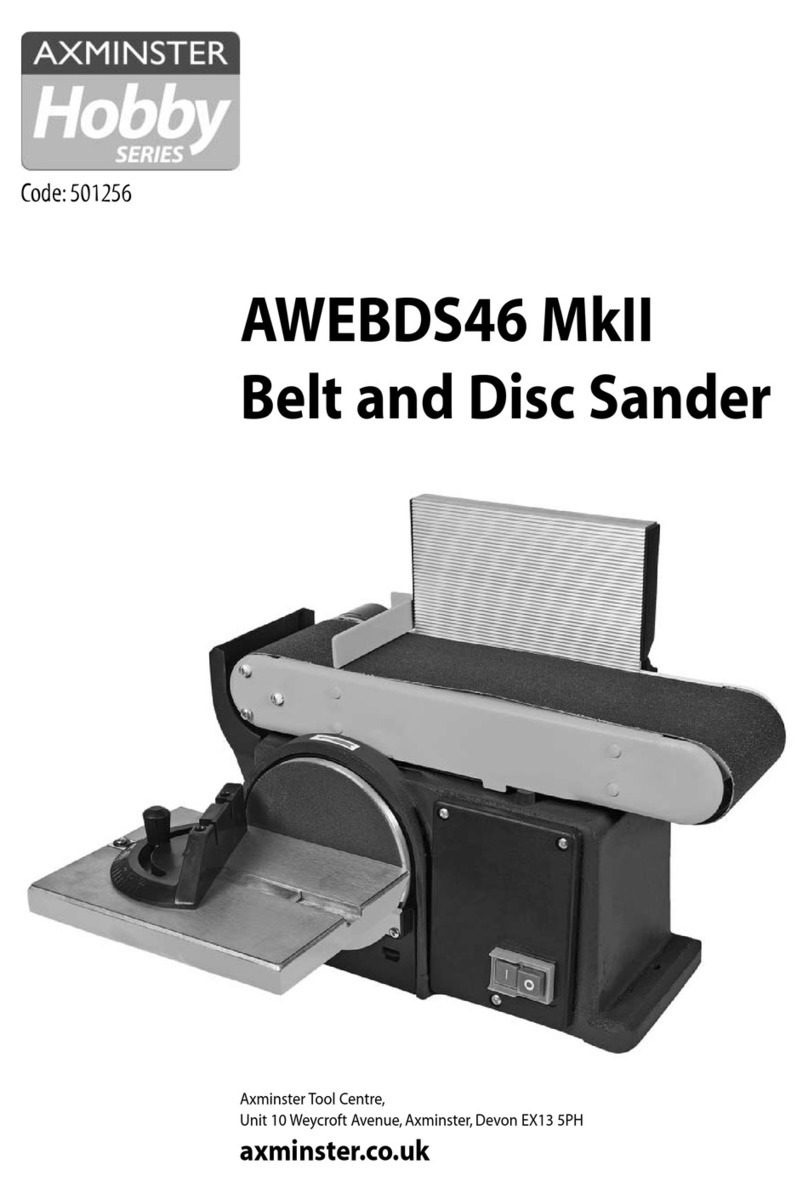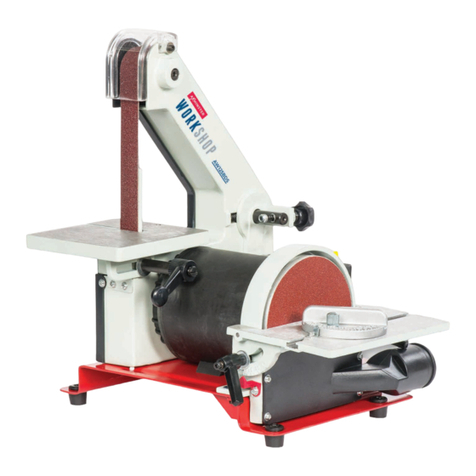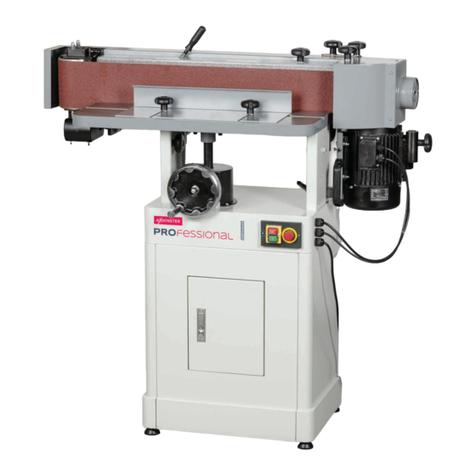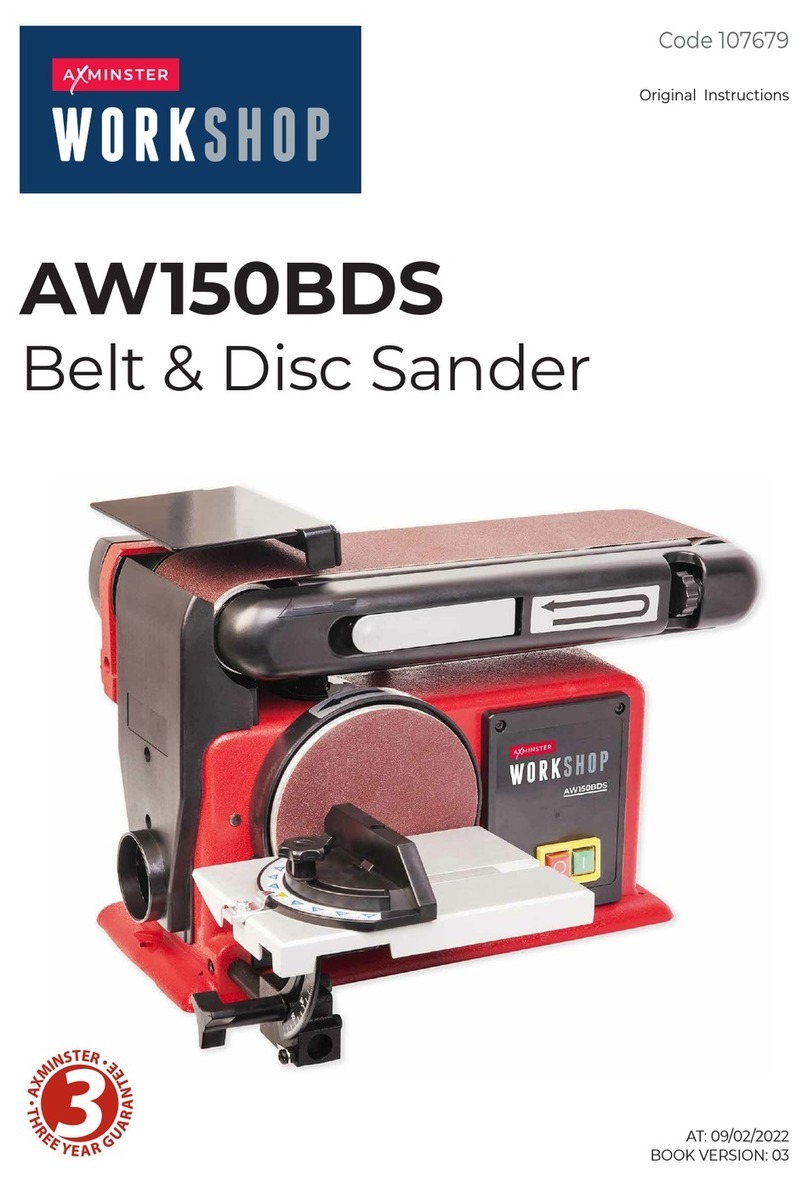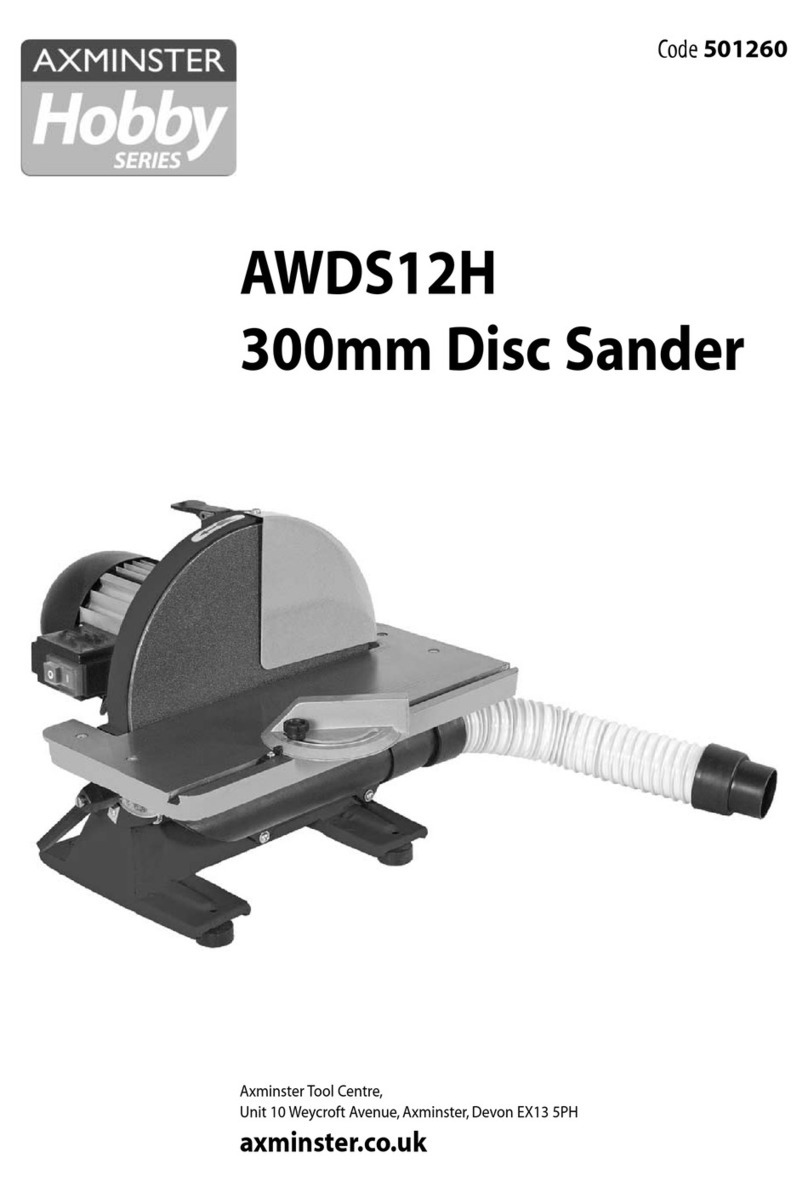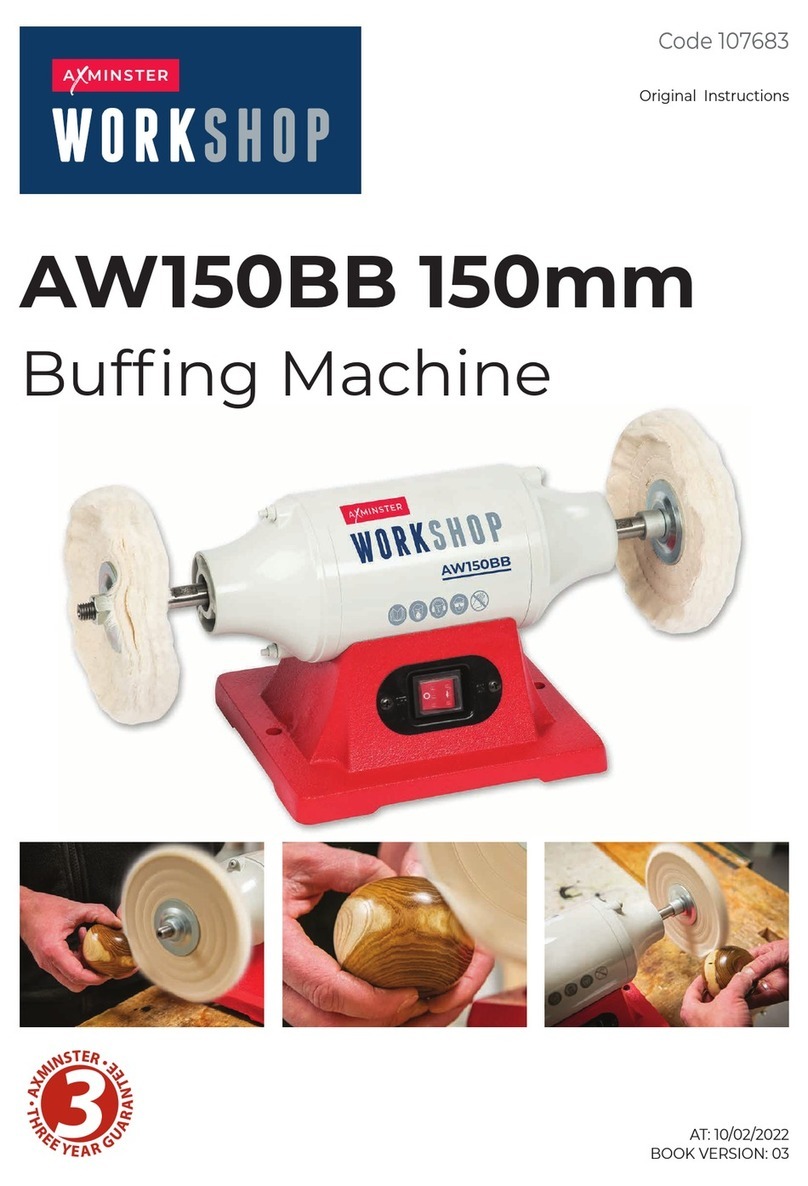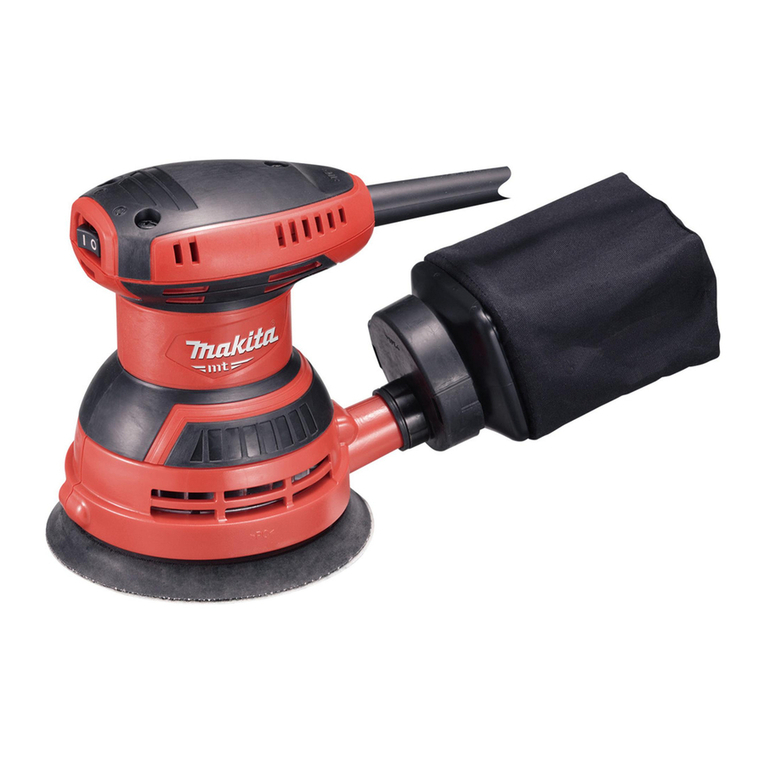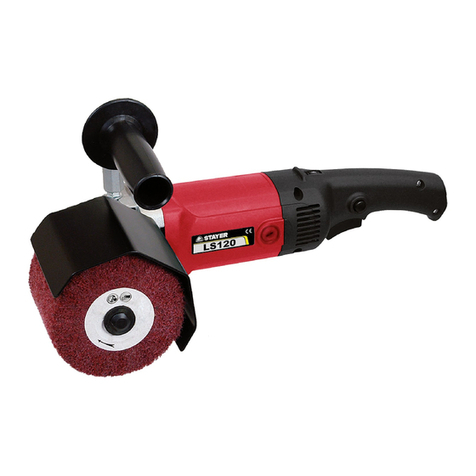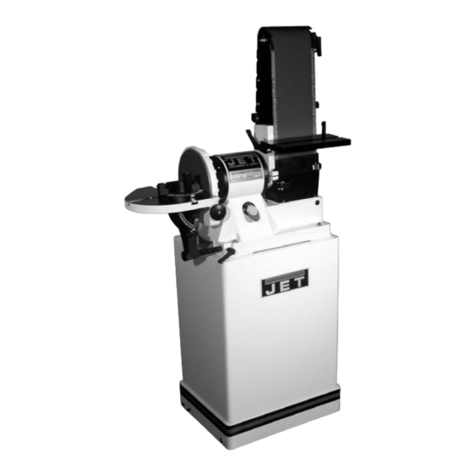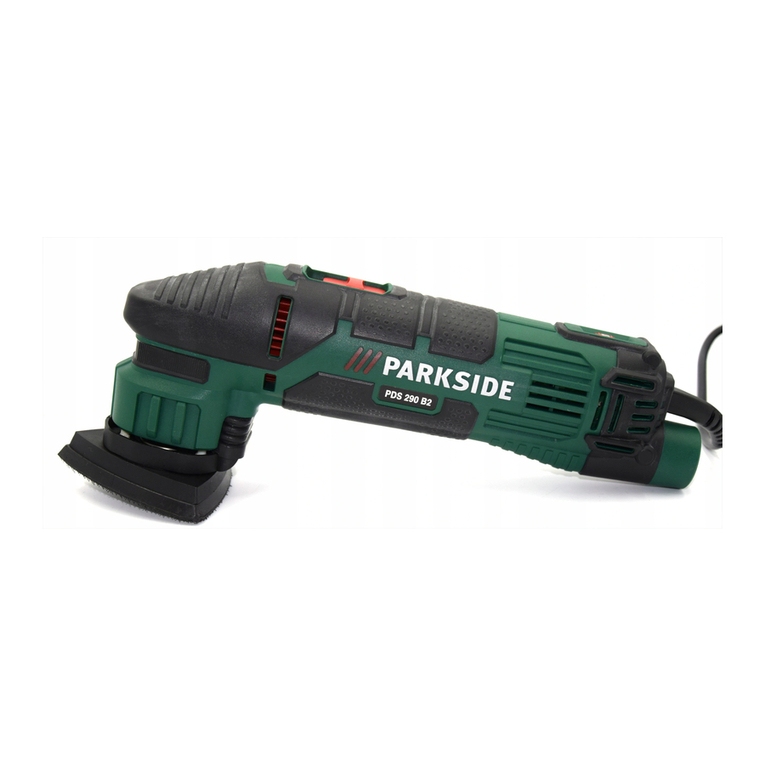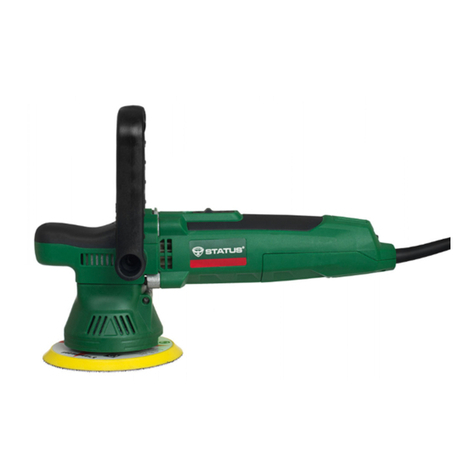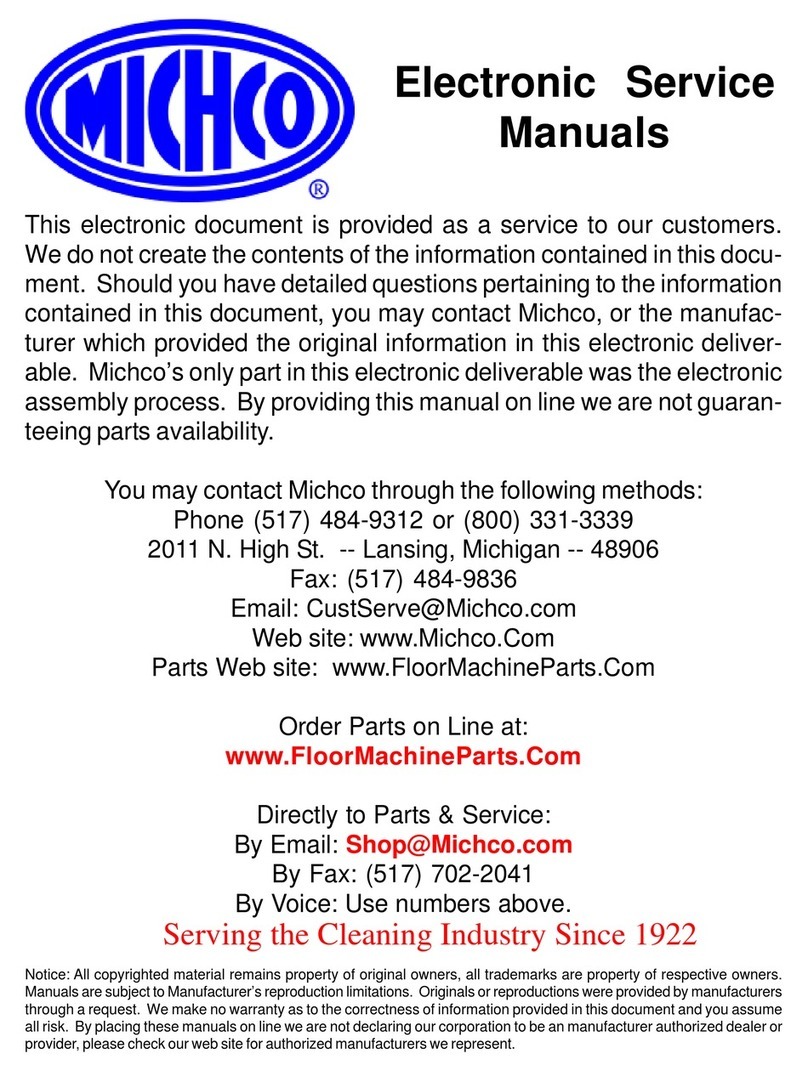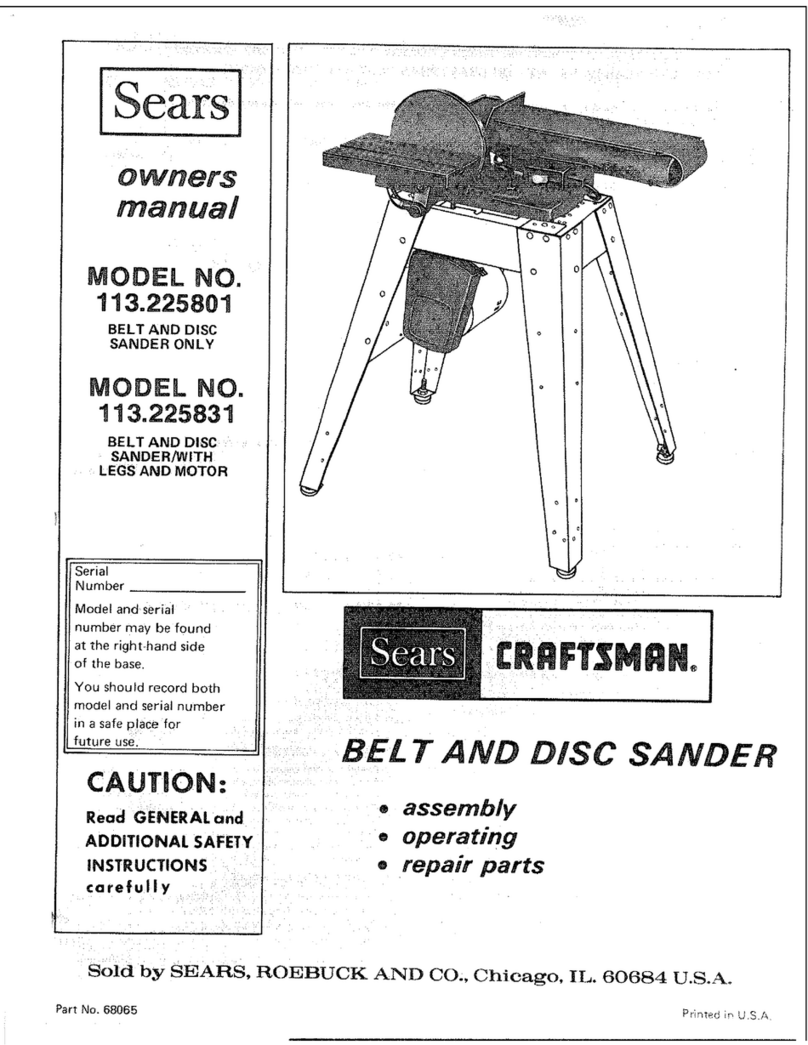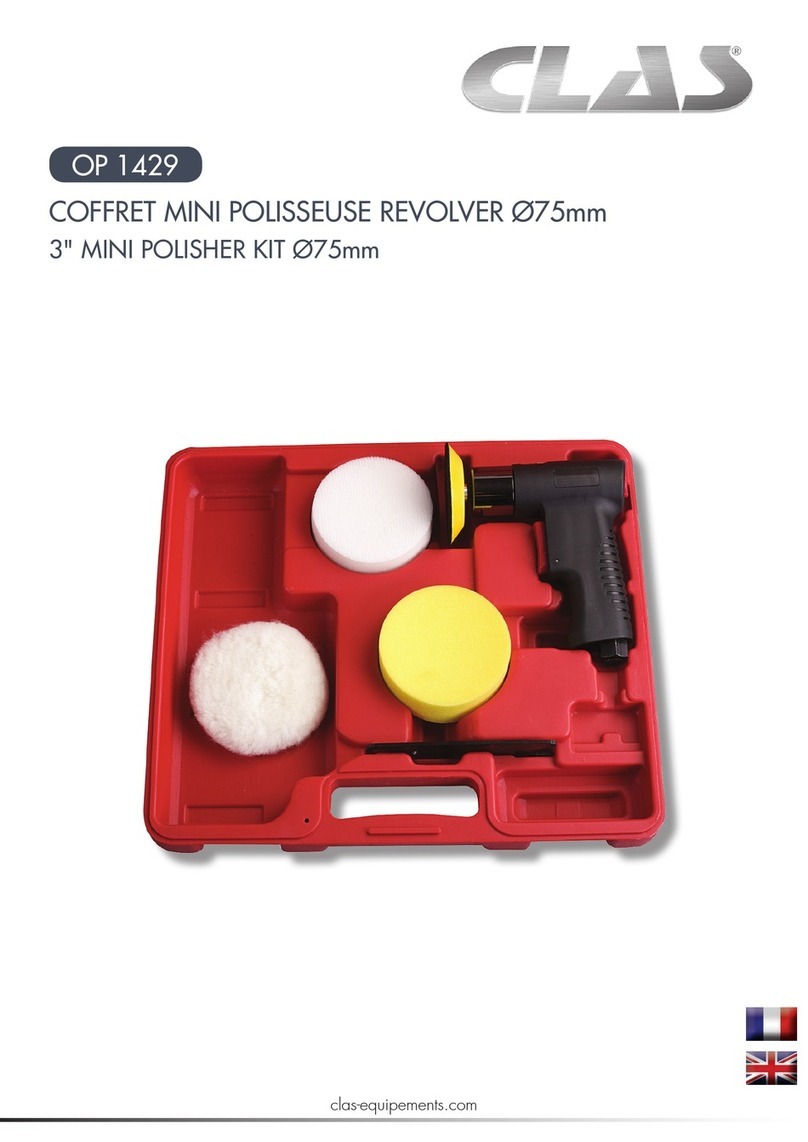05
WHITE
AXMINSTER
WSpecific to Sanding Machines...
Warning! The sanding disc cannot be declutched from the belt
and vice versa, both functions are active when the machine is
running. Remember this, and do not leave loose objects of any
description on the machine if it is going to be used.
!
Once the sander is mounted, carry out any setting operations and remove all tools used in the setting
operations (if any) and place safely out of the way. If you are working long lengths of material arrange
for extra support beyond the boundary of the machine, and check you have sufficient room to
manoeuvre the material through all the operations you will wish to carry out.
It is good practice to leave the machine unplugged until work is about to commence; also make sure
to unplug the machine when it is not in use. Always disconnect by pulling on the plug body and not
the cable.
After fitting a new sanding disc, it is good practice to lightly sand across the left side of the disc with a
reasonable sized (20mm x 50mm) piece of timber to make sure the sanding disc is correctly ‘seated’ on
the disc.The sanding action will press the sanding disc firmly back against the disc itself.
It is not good practice to wear gloves whilst sanding as you tend to lose the ‘feel’ of the
workpiece/sander contact, but obviously this removes the safety barrier between your fingers and the
sanding surface. Remain focused and exercise caution whilst sanding.
DO NOT sand very small pieces of work with bare hands; try to construct some form of holder.
Make sure you are comfortable before you start work, balanced, not reaching etc. If the work you are
carrying out is liable to generate excessive grit or dust or chips wear the appropriate safety clothing,
goggles, masks etc. If the work operation appears to be excessively noisy wear ear-defenders. If you
wear your hair in a long style wearing a cap, safety helmet, hairnet, even a sweatband, will minimise
the possibility of your hair being caught up in the rotating parts of the machine Likewise,
consideration should be given to the removal of rings and wristwatches if these are liable to be a
‘snag’ hazard.
Do not work with cutting/abrasive tools of any description if you are tired, your attention is
wandering or you are being subjected to distraction.
Do not use the machine within the designated safety areas of flammable liquid stores or in areas
where there may be volatile gases.
Check that sanding surfaces are still sufficiently abrasive to carry out the work you intend. Sanding
belt cleaning sticks are an efficient method of prolonging the life of the belts and discs and will also
maintain their operating performance.
Check that the belts or discs are undamaged; torn edges can pick up on the workpiece and will cause
the medium to tear, often very rapidly with accompanying sharp flapping edges.
Always offer the workpiece to the belt/disc so that the motion carries the work against the restraining
surface i.e. the work stop or the table (use the left hand side of the disc).
Continues Over....
